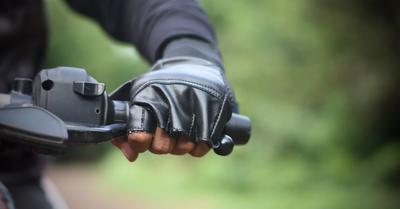Zero and ICE Motorcycle Components
Both Zero and ICE bikes are going to have similar tires, frames, cables, lights, and various other parts that are identical. All of these components will have similar longevity and reliability. The difference becomes apparent when you remove the seat, look inside the frame, and check the two contrasting power sources.
Instead of a combustible engine with over 2000 moving parts that must supply a spark, ignite the fuel, engage a piston, compress the piston, open and close valves to allow air in and release chemicals, pump oil throughout the system to lubricate the components, pump water to cool the system, create pipes to clear exhaust, time everything perfectly with chain drives, engage gears to change the speed of the engine, and pray everything holds up mile after mile without gaskets leaking, hoses leaking, oil leaking and gas leaking creating total engine failure. The electric engine has only 20 – 25 parts much of which are not in contact with each other as electric currents are exciting coils to spin a magnet almost effortlessly.
The ability of a Brushless DC motor allows a very high power-to-weight ratio in torque that results in most electric bikes leaving an ICE engine in its rearview mirror at a green light. This type of motor run by electricity and magnets is reliable because of fewer moving parts and less friction. The brushless is an upgrade over a Brushed DC motor because there is more friction involved in the brushed as the permanent magnets (called stators) are on the outside of the structure which continues to flip electrical currents and change the magnetic fields against a rotating armature. By controlling the magnetic fields, the BLDC motor can be more precise and can allow the rider to control the speed with incredible precision and without the need for gears. Just twist and go. And I mean go! The torque ratio is truly heart-stopping.
The brushless motor has a permanent magnet on the actual rotor and the electromagnets surrounding it are charged by a computer with precision to continually spin the rotor 360 degrees. This is a lighter, quieter, and longer-lasting motor than the brushed or the ICE engine.
The simplicity of the Brushed DC motor is only transcended by its efficiency. With an amazing 90% efficiency rating of power into energy (better than a brushed motor by 10% efficiency), the reliability of this engine is superior to that of an ICE.
Think about this: for every $100 of fuel you put into your combustible gas engine, you are wasting $70 to thermal friction, heat, exhaust, and pollution. The ICE engine has between 20 - 40% efficiency because only that amount of energy from the engine is being used to turn the wheel. With so many moving parts, the reliability is almost always compromised.
Zero and ICE Motorcycle Maintenance
Since maintenance speaks to reliability, let’s do a deep dive and check out the differences between a Zero and an ICE motorbike.
ICE Engine
Maintaining a traditional combustion-engined motorcycle is nothing new to the experienced biker, but, often, we fail to add up the costs of our weekly, monthly, and yearly maintenance costs. They get lost and overlooked in our daily routines. It’s impossible to pinpoint the exact costs, but here are some fairly average yearly costs to consider.
Fuel: Gas prices vary and increase from year to year (especially lately), but today’s price is nearly $4.50 a gallon. With an average tank holding 5 gallons getting around 40 miles per gallon, the bike will take you 200 miles per fill-up costing you $22.50. If you average about 400 miles a week, you are paying about $45.00 weekly for gas or $2,340 a year.
Oil, Filters, Spark Plugs, Coolant: $175 a year
Chain and sprockets: $150 a year
Repairs and Tune-ups: $500 a year
Total Cost: $3,165.00
Zero Engine
Tires and brakes will be the same on both so they cancel out; now for the Zero:
The belt lasts about 40,000 miles, and there is no oil, filters, or gasoline. Zero motorcycles boast a maintenance-free powertrain, so you’re only left with an average $1.00 charge for home or charging station electricity per day for a total of about $350.00 a year.
Total Cost: $350 a year.
Because the Zero motor doesn’t create or expend much heat, cooling systems from water or oil are made obsolete. Zeros have no spark plugs, no clutches (there’s only one gear), no air filters, and no ignition systems.
Brake fluid is still used and needs to be changed every 10,000 miles or so, but the cost is insignificant. Brake pads will need to be checked every two or three years, but the regenerative braking that captures and saves energy to the battery when applying the brakes saves the brake pads and disks for longer more reliable use.
Batteries for the Zero will last for over ten years and requires no specific maintenance. They can even be detached and taken inside for longer life.
For both ICE and electric motors, usually, a chain is used to transfer power to the rear wheel, so cleaning and lubricating the chain every 2000 miles is essential for most electric bikes, but not the Zero motorcycle. It has a silent, maintenance-free tension belt. This incredible, high-tech motorcycle is almost maintenance-free and is, therefore, incredibly reliable.
Up-front costs of the Zero are higher as it is considerably more expensive than its counterpart, the traditional combustion-engined bike, but you save on the back end because of its consistent, maintenance-free reliability.















